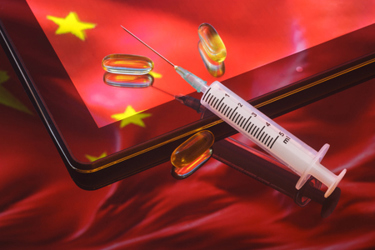Investors Create A U.S. Biotech With GLP-1 Assets From China

By Louis Garguilo, Chief Editor, Outsourced Pharma

“I’m just not good at retiring,” says Doug Bakan after a second unsuccessful attempt.
Luring him off the sidelines this time was Kailera Therapeutics, which he joined in August of last year as Chief Technology Officer. He was employee number four.
That biotech’s formation is itself a revelatory story that highlights the prowess of today’s investor class.
Another component to Kailera is all four of its clinical candidates are GLP-1-based therapies.

Lead candidate KAI-9531 is an injectable GLP-1/GIP-receptor dual agonist that has demonstrated positive results in Phase 2 trials in obesity and diabetes in China.
Bakan is undaunted by the task of sorting through all this for us.
He capably places Kailera within our drug discovery and development ecosphere, our investor-driven biotech formation, the rush to GLP-1-related programs, our biopharma China syndrome, and effective outsourcing.
Outsourcing because we should never underestimate the influence CROs and CDMOs have on our drug industry. I’d submit it enables much of how any biopharma organization is assembled and operated in the modern age.
But let’s start with how Kailera got started. It’s a master class on today’s investor thought processing for funding a biotech, and it toggles us between the U.S. and China.
China-Derived Assets For The U.S.
Kailera has already grown to some 100 employees supporting its four clinical-stage programs, all acquired from Jiangsu Hengrui Pharmaceuticals Co., Ltd. (Hengrui).
Along with KAI-9531, in the clinic for Kailera is an intriguing small molecule GLP-1 receptor agonist (KAI-7535) formulated as a once-daily oral tablet. Kailera’s other assets are an orally administered version of KAI-9531 and KAI-4729, a GLP-1/GIP/Glucagon triple agonist.
If you aren’t familiar with Hengrui, it’s an integrated, global pharmaceutical company headquartered in China.
Merck just announced it also entered an exclusive license agreement with the organization, for an investigational oral Lipoprotein(a) Inhibitor.
Hengrui prides itself as having innovation as its “core development strategy.” The organization has been on Pharma Exec’s annual listing of the global Top 50 pharmaceutical companies for six consecutive years since 2019.
I’m focusing on this for good reason.
Just as the U.S. (and Europe to an extent) is divided by the subject of “decoupling” from China, a great deal of new-drug discovery and research now emanates from that country’s biotech and pharma infrastructure and companies.
China has emerged as a major source of new drug research and an attractive destination for global biopharma companies and investors.
It’s no longer only a tale of overreliance supply chains centered in China for our manufacturing, antibiotics and generics.
Today China accounts for about one-quarter of the global R&D pipeline.
Kailera, then, is by no means alone, but very nicely profiles for us this turn of events.
The Opportunity To Keep Me Working
Kailera was launched by co-lead investors Atlas Venture, Bain Capital Life Sciences, and RTW Investments, with participation by Lyra Capital.
Amazingly (to me at least), these investors had pre-selected the four compounds they wanted to create a company around.
They then went and did a deal with Hengrui to in-license them, determining it would take around $400 million to launch a company to put them in the clinic in the U.S. and globally.
That funding was raised, and the investors hired a CEO (Ron Renaud) who held that position at other biotechs, and had also worked at Bain, to lead the charge.
“The investors knew exactly what and who they wanted to form a company around,” comments Bakan.
“They purposefully sought and made a deal to bring in four assets centered on GLP-1 science from Hengui. Kailera was formed more-or-less simultaneously with the acquisition of those assets.”
How was Bakan lured to Kailera?
“I got a call from my former CEO at Arena Therapeutics,” he explains.
“He was aware of a company being formed to advance a portfolio of promising assets in the GLP-1 space, and they needed somebody to build and head up a Tech Ops group.”
Bakan agreed it was a great opportunity, and while the company was headquartered in Boston, he would work from a San Diego office near his home.
“I called about 10 of my former colleagues. I gave them a pitch about a ‘very cool adventure’ we could all work on together.
“All 10 said yes,” he says with a broad smile.
“We were even able to pull one person out of retirement along with me. The Tech Ops team got off to a strong, quick start, and we’ve continued to add talented people to the group ever since.”
How It Works, How We’ll Outsource
Hengrui continues to progress pivotal phase 3 clinical trials in China for KAI-9531 (known in China as HRS9531).
It manufactures both the drug substance and drug product, but those supplies are primarily for use in China, where Hengrui maintains commercial rights. Kailera gets rest of world.
“When I came on board and knew we were going to stay as an outsourcing company with respect to CMC manufacturing, “says Bakan, “I looked at the anticipated product demands and geopolitical environment, and decided it made the most sense to find CDMO partners who can manufacture our drug substance and drug product outside of China, both to supplement Hengrui’s manufacturing capabilities as well as to bolster the robustness of our supply chain.”
The past half year or so Bakan has been devoting his time to identifying CDMOs for all the development and manufacturing activities he requires – for all four candidates.
“My team and I will marshal the expertise we have gained over the years working with CDMOs to pick strong external partners to help us along the way,” he says confidently, and I can see he’s relishing the challenge.
Lightening his load a bit, Kailera can, as needed, purchase materials from Hengrui, providing additional flexibility in the company’s supply-chain.
Nonetheless, says Bakan, “the robustness of that supply chain is something that's on the front of my mind every single day.”
It very well should be.
How will Kailera compete with the legions of GLP-1 developers also vying for CDMO attention and capacity – including Big Pharma – and considering Bakan wants to outsource stateside to the extent possible?
Next we’ll learn about his experiences so far.
